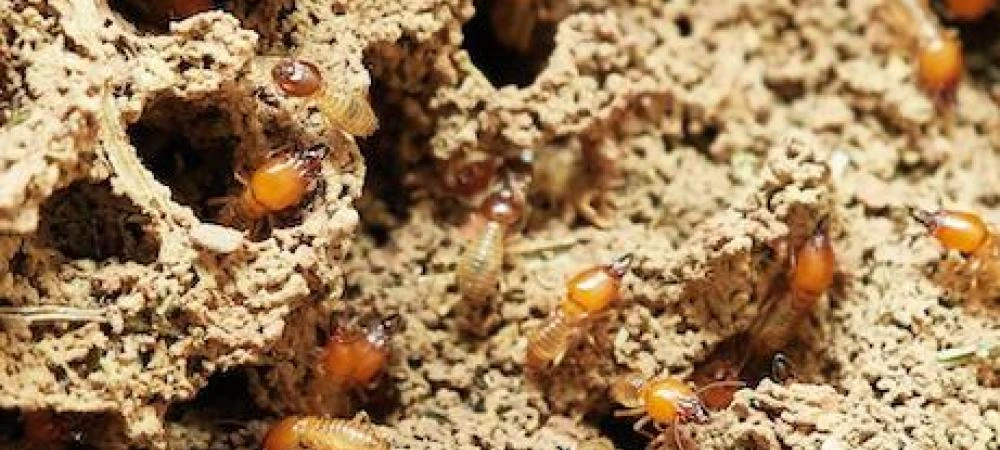Termites are known for their ability to cause extensive damage to wooden structures with the average repair cost coming to $7,500. There are several things that you can do to help prevent termite problems from developing, and it is also important to be aware of the signs of termite activity so that you can take action quickly if necessary.
What Do Termites Look Like?
Termites are small, winged insects that range in color from white to brown. They are often mistaken for ants, but there are several distinct differences between the two.
- Termites have straight antennae, while ant's antennae are bent.
- Termites also have a broad waist, while ants have a narrow waist.
- Termites' wings are of equal size, while an ant's hind wings are smaller than its front wings.
While most people think of termites as wood-eating pests, there are actually many different types of termites that eat different things. Some termites eat dead leaves, others eat soil, and still others eat wood. Needless to say, the type of termite that is most likely to damage your home is the wood-eating variety.
Subterranean termites are the most common type of termite found in Massachusetts and the only type native to the area. These insects are small – about ½ an inch long – and pale in color. Their wings are equal in size, and they have a straight waistline.
Signs of Termites
There are several early warning signs of termites that homeowners should be aware of in order to help prevent an infestation or catch one early.
- Termite Wings: If you find piles of wings near doors or windows, termites are likely swarming in your home. Swarming is how termites reproduce, and it generally happens in the springtime. Swarmers are first produced when a colony reaches 3 or 4 years of age in ideal conditions, so if you see swarmers or their wings, they have likely been on the property for a while.
- Hollowed-out Wood: This is perhaps the most obvious sign of termite damage. If you tap on wood and it sounds hollow, there’s a good chance that termites have been munching on it.
- Mud Tubes: Termites use these small tunnels made of mud to travel from their nests to food sources. If you see mud tubes on the exterior of your home, or in the basement, it’s a good indication that there is an infestation inside.
- Discolored Paint: If you see paint that is bubbling or peeling, it could be a sign of termites. The insects release gas as they eat away at the wood, which can cause paint to blister.
- Cracks in Drywall: Termites will sometimes eat through the drywall in search of food. If you see cracks or holes in your drywall, it’s a good idea to have them checked out.
- Termite Droppings: Termites leave behind small, pellet-shaped droppings known as frass. If you see frass in your home, it’s a good indication that there is an infestation.
If you see any of these signs, it's important to contact a professional pest control company immediately to get rid of the problem before it worsens. A trained eye will be able to spot the signs of an infestation, and they can advise you on the best course of action.
If you think you may have termites, it's important to contact a pest control professional as soon as possible. With 129+ years of experience, Ransford Pest Control offers exceptional termite treatment options, during which our experienced exterminators are able to inspect your home and determine if there is an infestation. If there is, we will work with you to recommend the best course of treatment. Call us today to get started!

